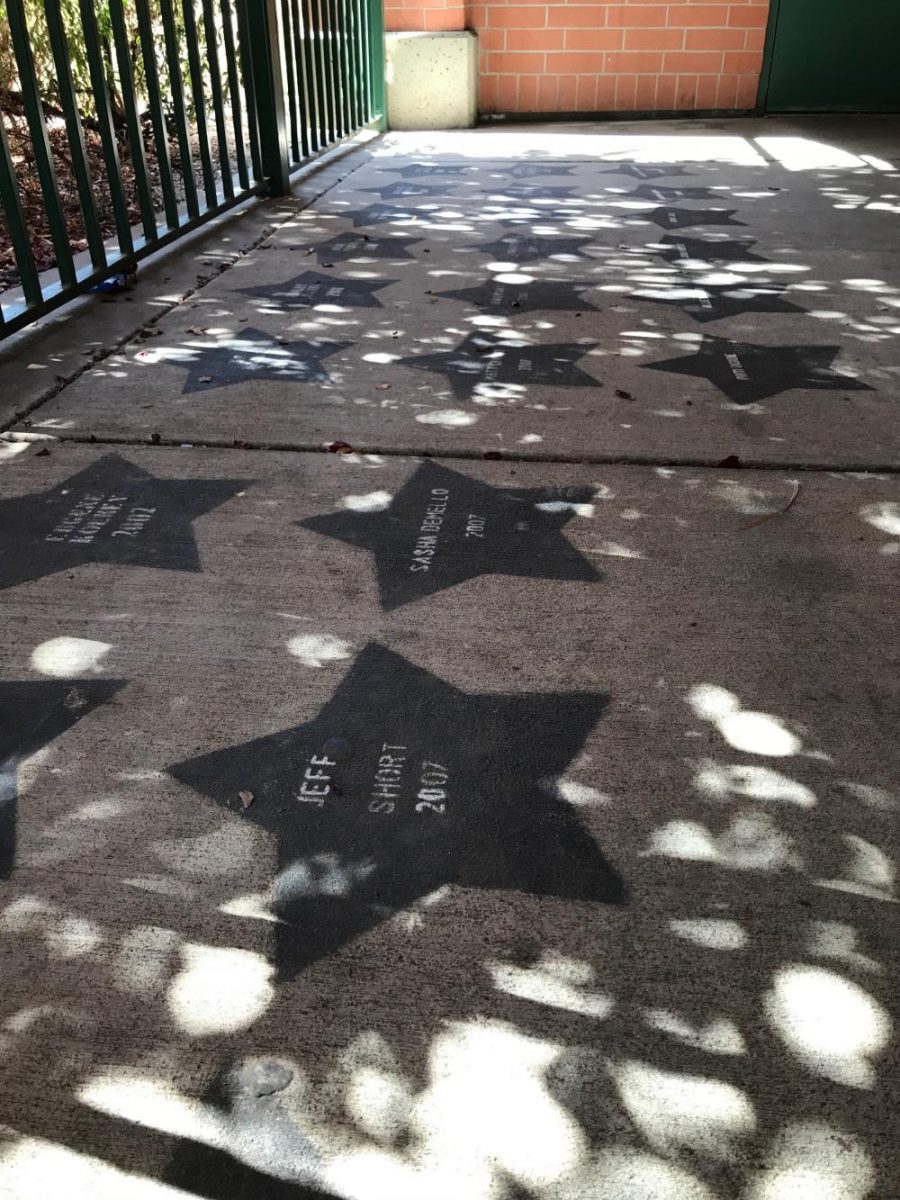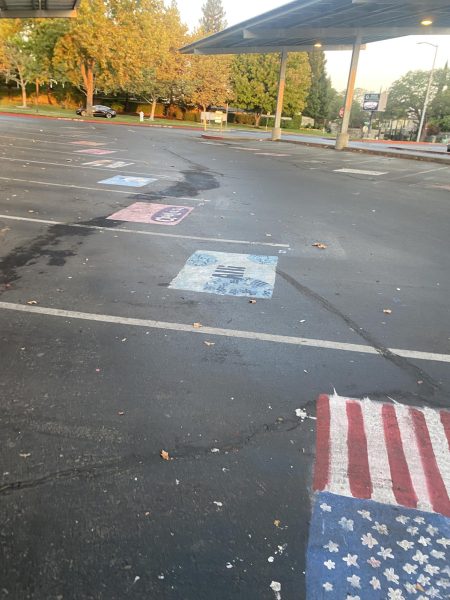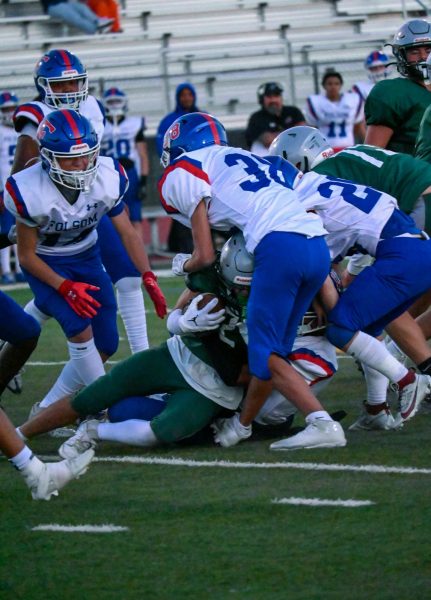Video bulletins eliminated
Implementation of “Grizz Time’ means there isn’t room during the school day for a student news broadcast
Like the streets near Hollywood, stars outside the entrance to the video studio near the library honor former students who were part of the media program at Granite Bay High. This year, the media program is no longer producing video bulletins.
Second period on Tuesdays and Thursdays looks a little different this fall at Granite Bay High.
Because of the newly structured schedule, all classes are now equal in length leaving teachers now extra time to read students the bulletins or for them to show video bulletins to students.
As a whole, the production of weekly video bulletins has been eliminated from the fall semester.
Senior class president Taylor Stiern expressed that there is an increased difficulty in trying to communicate valuable information with the student body.
According to Stiern, the bulletins are mainly used by student government for “getting the information out.”
“Now that we don’t have them, trying to find a way for us to even get those ads out – we have to produce them,” Stiern said. “(Videos) are not our specialty, so they’re not the best.”
To address the issues, student government has furthered their usage of other communication forums such as Twitter and Remind.
“Nobody wants to read a long poster or long flyer,” Stiern said. “Not everyone has a Twitter or not everyone is on Remind, so we are not targeting the big majority again.”
Though this hasn’t proven to be a problem within the classroom for senior Brennan Holt, whose second period teacher posts bulletins on the board every day, this is not the case for all students and classes.
“For classes that don’t get the written bulletins read to them every day, I think you’re probably missing out on some information,” Holt said.
The change was originally implemented so that media students would have more opportunities to work on projects aside from bulletins.
“I do think that it helps save time in class because it did end up being kind of a waste of time in some classes last year,” Holt said.
Media instructor Zachary Weidkamp has arranged the media program so that his students will learn different aspects of video production throughout the beginning and advanced classes.
“This past year, because of a bunch of different things … we ultimately didn’t get enough students to fill a full section,” Weidkamp said.
The class had more than 30 students enrolled, but the administration did not want to split the class in half to fill both the fall and spring courses.
“Five or six years ago we had 15 kids in the course and it ran – but it’s not my call, it’s an administrative call,” Weidkamp said.
Instead, the class was combined so that all students were together in one class, and that class will be held during the spring semester.
“For electives and study programs like this, we are always in a battle trying to capture students’ attention and to get them in the program, because that’s what drives our livelihood,” Weidkamp said.
This can make teaching challenging, as the students have mandatory requirements such as producing bulletins on behalf of the school.
“We can’t be too strict because it’s not going to be fun for kids,” Weidkamp said. “We can’t be too lenient, otherwise we are going to have kids bouncing off the walls.
“It’s a happy medium between making a fun environment, but still having some structure and still having a system set up where it feels like kids are actually doing something.”
Despite not producing weekly bulletins to get information out to the campus, Weidkamp hasn’t received any backlash or frustration from teachers or students.
“It’s a hard thing for the school because the school doesn’t get that information in the bulletins,” Weidkamp said. “But when the system is set up – our bulletins are good because the system works – I can’t destroy the system just for the sake that we don’t have enough kids in a class.”
Weidkamp has had further pedagogical challenges as he has adjusted to the changes in his program.
Beginner media students are not put in charge of the media bulletins because they do not have the knowledge or experience yet to produce the videos at a high level.
So although there have been issues with communicating information at a campus-wide level, the biggest problem for Weidkamp has been making adjustments to the media program so that it caters to the needs of the new GBHS intervention schedule.
“If they are already getting the thrill of doing the bulletins in the beginning class, what’s the incentive for them to go on to the advanced class,” Weidkamp said. “It would be like shooting yourself in the foot – it wouldn’t make logical sense.”









![A group photo of all students who came to STN at the first Cinefest of STN were they showed films that other schools did for some of the competitions.
"[my favorite moment was] crazy 8 or cinefest or socializing." Elliana Montez a freshman at GBHS](https://granitebaytoday.org/wp-content/uploads/2025/03/CgHlLzxuCLXTL8GUeOFSXTK2JFtSMxUFrH6bnLcM-600x450.jpg)




